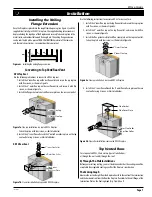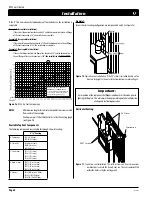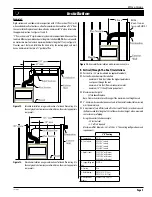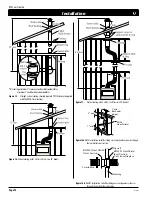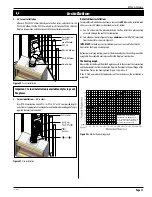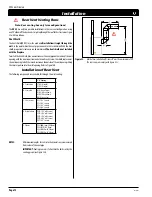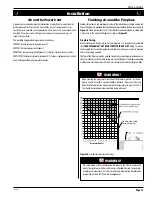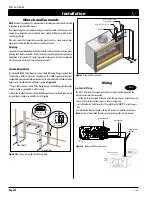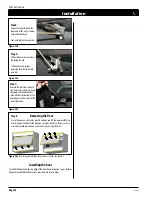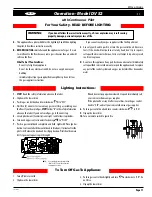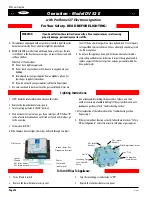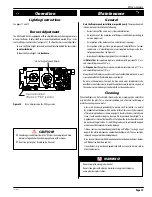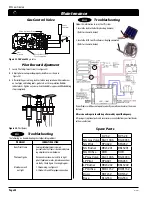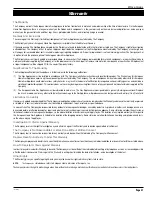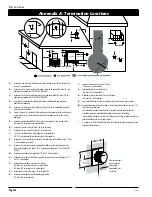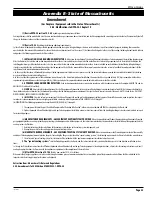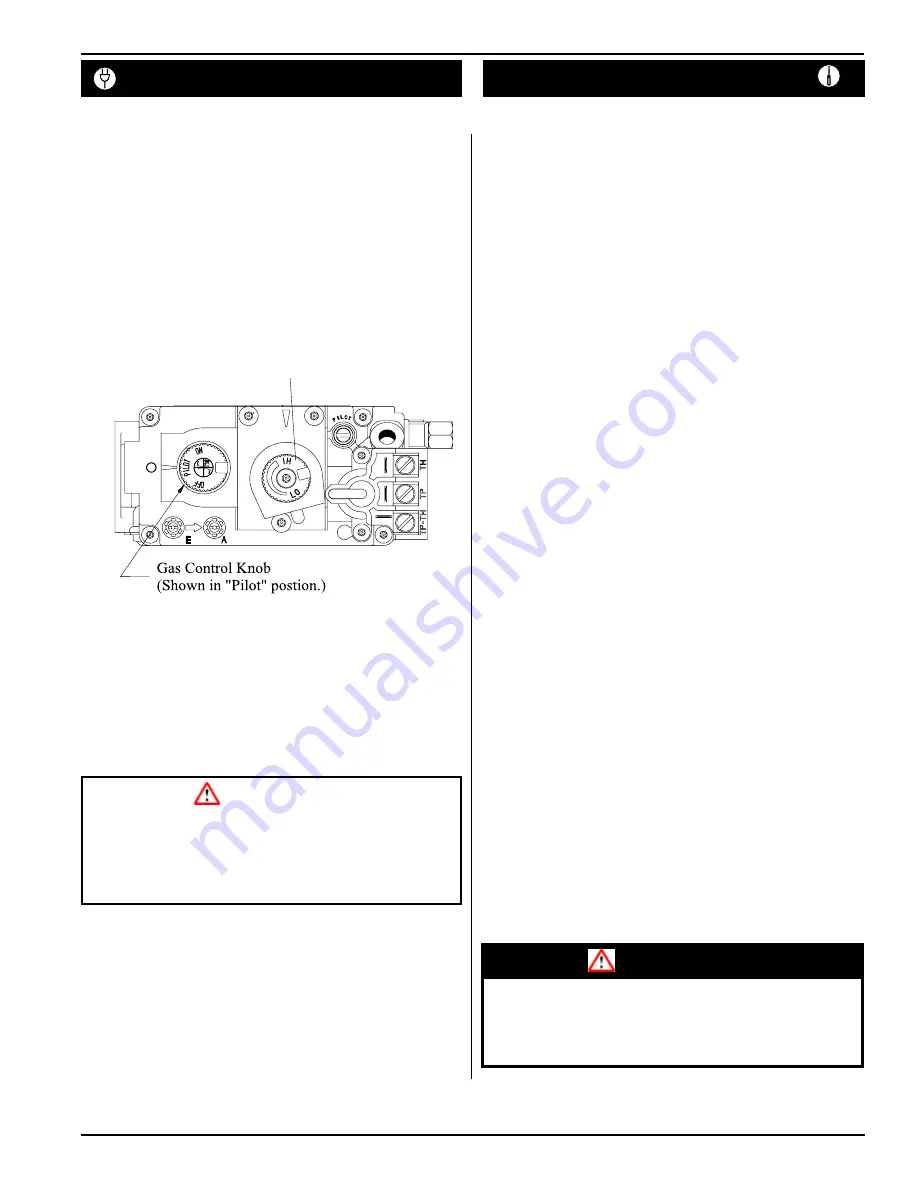
Page 19
DV52 Gas Fireplace
rev.101207
Maintenance
General
•
Have the fireplace and installation inspected yearly
. The inspection must
include, but is not limited to, the following:
•
A visual check of the entire vent system and termination.
•
An inspection of the explosion relief flappers and the door gasketing to
ensure a proper seal.
•
An inspection of the burner, venturi, and primary air openings.
•
An inspection of the gas valve, gas components, and pilot flame. For your
convenience a 1/8" manifold pressure tap is supplied on the gas valve for a
test gauge connection. See Figure 32.
•
Inspection of all optional equipment; fans, thermostats, etc.
•
For
Natural Gas
this appliance requires a minimum inlet pressure of 5.5" w.c.
and a manifold pressure of 3.5" w.c.
•
For
Propane Gas
this appliance requires a minimum inlet pressure of 11" w.c.
and a manifold pressure of 10" w.c.
•
Always keep the fireplace area clear and free of combustible materials, as well
as gasoline and other flammable vapors and liquids.
•
Do not use this appliance if
any part has been under water
. Immediately call a
qualified service technician to inspect the appliance and to replace any part of
the control system and any gas control which has been under water.
Operation
Lighting Instructions
See pages 17 and 18.
Burner Adjustment
The
DV 52 and DV 52 E are equipped with an adjustable burner, allowing you to raise
or lower the flames. To adjust the flames, locate the black knob marked 'Hi-Lo', in the
center of the gas control valve (See Figure 32). The front burners are not adjustable.
•
To raise the flame height, turn the black knob (located behind the lower trim)
counter-clockwise
.
•
To lower the flame height, turn
clockwise
.
Figure 32.
'Hi-Lo' Adjustment on the DV 52 gas valve.
Cleaning
When the fireplace is first activated, there may be some smoking and a visible film
may be left on the glass. This is a normal condition, and is the result of burning of
protective coatings on new metal.
•
Glass must be cleaned periodically to remove any film (which is a normal
by-product of combustion) which may be visible. Film can easily be removed
after removing the door, as shown on page 15. Handle the door carefully, and
clean it with non-abrasive glass cleaners. We recommend Stove Bright® Gas
Appliance Glass Cleaner by Forrest Paint Co. Follow the instructions for use and
do not clean the glass when it is hot! If the glass becomes coated with deposits
which cannot be removed it must be replaced.
•
Silicone seals on inner door during initial firing will "off gas", leaving a visual
deposit of a white substance on combustion chamber walls. This can easily be
removed using normal household products.
•
Use a vacuum cleaner or whisk broom to keep the control compartment, burner,
and firebox free from dust and lint.
•
Linear burners may be cleaned periodically with a vacuum to remove soot or
other contaminates.
'Hi-Lo' Adjustment Knob
CAUTION!
Fireplace gas control must be in the “OFF” position and pilot and main
burners extinguished when cleaning appliance with a vacuum.
Doors can get very hot. Handle only when cool.
WARNING!
Do not attempt to clean glass when hot.
Do not clean glass with abrasive materials as any glass etching may
cause premature glass failure.



